Stop web browsers from causing redirects to donaldredpage.icu
Notification SpamAlso Known As: donaldredpage.icu pop-up
Get free scan and check if your device is infected.
Remove it nowTo use full-featured product, you have to purchase a license for Combo Cleaner. Seven days free trial available. Combo Cleaner is owned and operated by RCS LT, the parent company of PCRisk.com.
What is donaldredpage[.]icu?
donaldredpage[.]icu is a deceptive website that is usually opened by potentially unwanted applications (PUAs) installed on browsers or operating systems. This site causes redirects to other untrustworthy websites or displays dubious content. It is very similar to dsruseedsdreed[.]com, anwap-download[.]club, aleailarm[.]com, and many other web pages of this kind.
Generally, people download and install PUAs that open these sites accidentally. When installed, PUAs usually gather information relating to users' browsing habits and/or serve unwanted, intrusive advertisements.
![donaldredpage[.]icu pop-up redirects](/images/stories/screenshots201907/donaldred-homepage.jpg)
Each time donaldredpage[.]icu is visited, it opens a number of other untrustworthy web pages (about two or three) or displays dubious, untrustworthy content. Its actions depend on the user's geolocation. Opened web pages might be malicious, used to promote untrustworthy, dubious applications, and so on.
Note that donaldredpage[.]icu asks visitors for permission to show notifications using the 'clickbait' technique. I.e., it encourages the user to press the "Allow" button designed to verify that the visitor is not a 'robot'. If clicked, this button will simply allow donaldredpage[.]icu to display various notifications.
PUAs that open sites such as donaldredpage[.]icu usually collect browsing-related (and other) data such as IP addresses, addresses of visited websites, entered search queries, geolocations, and so on. Additionally, some might record personal details.
Developers share the data with third parties who misuse it to generate revenue. Some of these third parties might include cyber criminals. Furthermore, PUAs often serve unwanted ads. For example, coupons, banners, surveys, pop-ups, etc.
These are annoying and distracting, since most are displayed via tools that enable placement of third party graphical content on any site (thus, the ads cover content of underlying web pages). When clicked, the ads open dubious websites or execute scripts that download or install unwanted apps.
| Name | donaldredpage.icu pop-up |
| Threat Type | Push notifications ads, Unwanted ads, Pop-up ads. |
| Detection Names | Full List Of Detections (VirusTotal) |
| Serving IP Address | 178.128.241.54 |
| Observed Domains | 0.donaldredpage[.]icu, 1.donaldredpage[.]icu, 2.donaldredpage[.]icu, 3.donaldredpage[.]icu, 5.donaldredpage[.]icu, 4.donaldredpage[.]icu, 6.donaldredpage[.]icu |
| Symptoms | Seeing advertisements not originating from the sites you are browsing. Intrusive pop-up ads. Decreased internet browsing speed. |
| Distribution Methods | Deceptive pop-up ads, potentially unwanted applications (adware). |
| Damage | Decreased computer performance, browser tracking - privacy issues, possible additional malware infections. |
| Malware Removal (Windows) |
To eliminate possible malware infections, scan your computer with legitimate antivirus software. Our security researchers recommend using Combo Cleaner. Download Combo CleanerTo use full-featured product, you have to purchase a license for Combo Cleaner. 7 days free trial available. Combo Cleaner is owned and operated by RCS LT, the parent company of PCRisk.com. |
PUAs are often advertised as legitimate and useful, however, developers promote them in this way simply to trick people into downloading and installing them.
Unfortunately, most PUAs are not useful at all - they cause unwanted redirects, feed users with ads, and collect various user-system information. Having them installed (and/or using them) might lead to issues with privacy, browsing safety, and some users might even become victims of identity theft.
How did adware install on my computer?
In most cases, PUAs are downloaded and/or installed unintentionally. Typically, users download/install them when they are included into the set-ups of other software. Offers to download or install additional apps are usually hidden in "Custom", "Advanced" and other similar settings of the set-ups.
This distribution method is used to proliferate unwanted apps and is called "bundling". It works effectively when users leave settings unchanged, thereby allowing additional apps to be downloaded and installed with other software. PUAs can also be downloaded/installed through clicked intrusive ads.
How to avoid installation of potentially unwanted applications
Download software from official websites and avoid third party downloaders, installers, tools such as Peer-to-Peer networks (torrent clients, eMule, and so on), unofficial websites, and other similar channels. Install software properly. If a download or installation set-ups includes settings, check them and dismiss offers to install/download unwanted apps.
Avoid clicking intrusive ads, especially on unofficial, dubious websites. Once clicked, they can force people to visit other dubious, potentially malicious web pages or trigger unwanted downloads/installations.
If unwanted redirects and ads are a common problem, check the list of apps (extensions, add-ons, plug-ins) that are installed on the browser and remove all unknown/suspicious entries immediately. Do the same with programs of this kind installed on the operating system.
If your computer is already infected with rogue applications, we recommend running a scan with Combo Cleaner Antivirus for Windows to automatically eliminate them.
Appearance of donaldredpage[.]icu website (GIF):
![donaldredpage[.]icu website appearance (GIF)](/images/stories/screenshots201907/donaldred-gif.gif)
Instant automatic malware removal:
Manual threat removal might be a lengthy and complicated process that requires advanced IT skills. Combo Cleaner is a professional automatic malware removal tool that is recommended to get rid of malware. Download it by clicking the button below:
DOWNLOAD Combo CleanerBy downloading any software listed on this website you agree to our Privacy Policy and Terms of Use. To use full-featured product, you have to purchase a license for Combo Cleaner. 7 days free trial available. Combo Cleaner is owned and operated by RCS LT, the parent company of PCRisk.com.
Quick menu:
- What is donaldredpage.icu pop-up?
- STEP 1. Remove spam notifications from Google Chrome
- STEP 2. Remove spam notifications from Google Chrome (Android)
- STEP 3. Remove spam notifications from Mozilla Firefox
- STEP 4. Remove spam notifications from Microsoft Edge
- STEP 5. Remove spam notifications from Safari (macOS)
Disable unwanted browser notifications:
Video showing how to disable web browser notifications:
 Remove spam notifications from Google Chrome:
Remove spam notifications from Google Chrome:
Click the Menu button (three dots) on the right upper corner of the screen and select "Settings". In the opened window select "Privacy and security", then click on "Site Settings" and choose "Notifications".
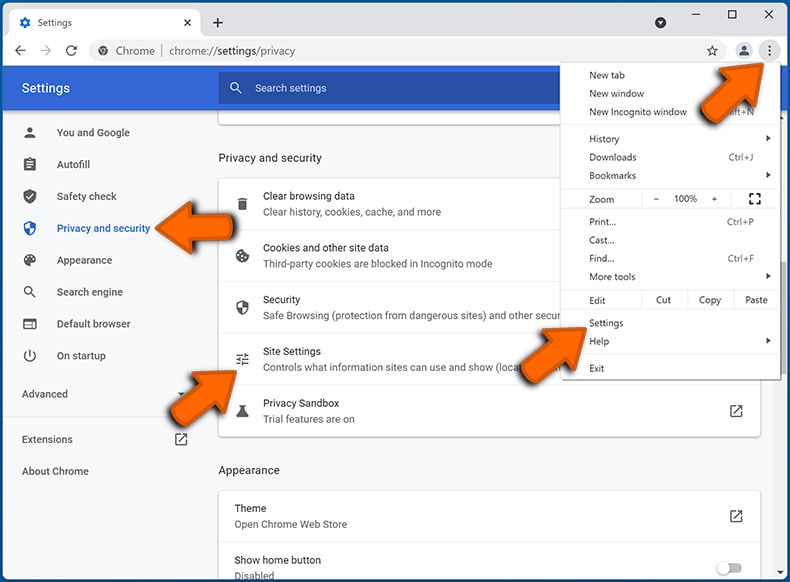
In the "Allowed to send notifications" list search for websites that you want to stop receiving notifications from. Click on the three dots icon near the website URL and click "Block" or "Remove" (if you click "Remove" and visit the malicious site once more, it will ask to enable notifications again).
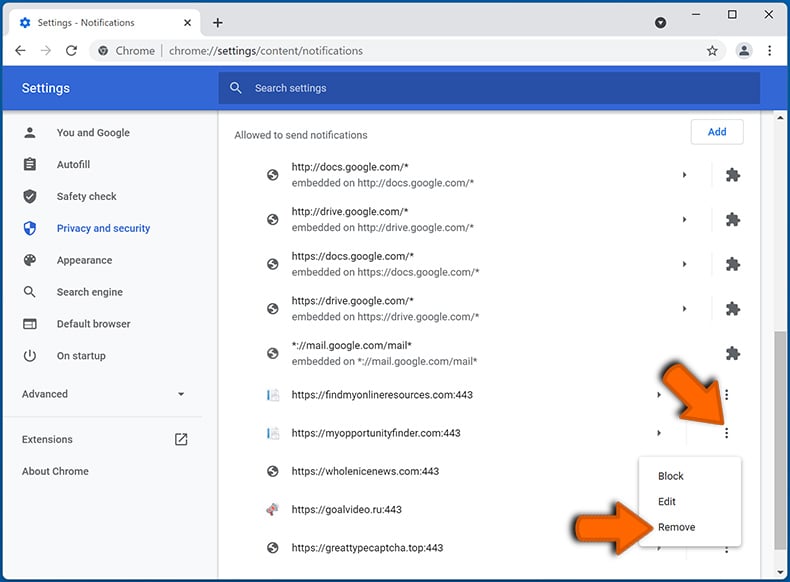
 Remove spam notifications from Google Chrome (Android):
Remove spam notifications from Google Chrome (Android):
Tap the Menu button (three dots) on the right upper corner of the screen and select "Settings". Scroll down, tap on "Site settings" and then "Notifications".
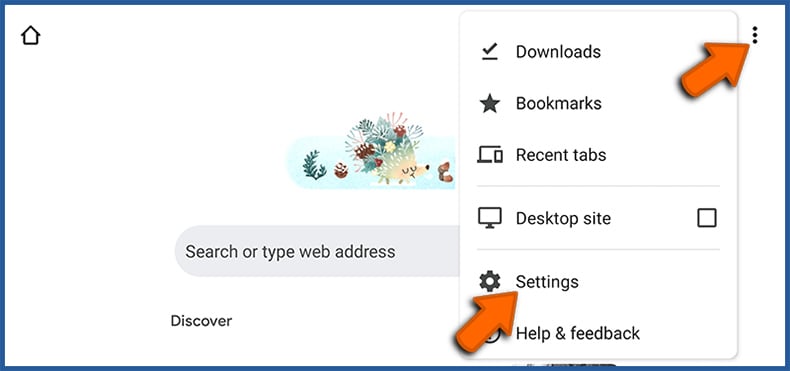
In the opened window, locate all suspicious URLs and tap on them one-by-one. Once the pop-up shows up, select either "Block" or "Remove" (if you tap "Remove" and visit the malicious site once more, it will ask to enable notifications again).
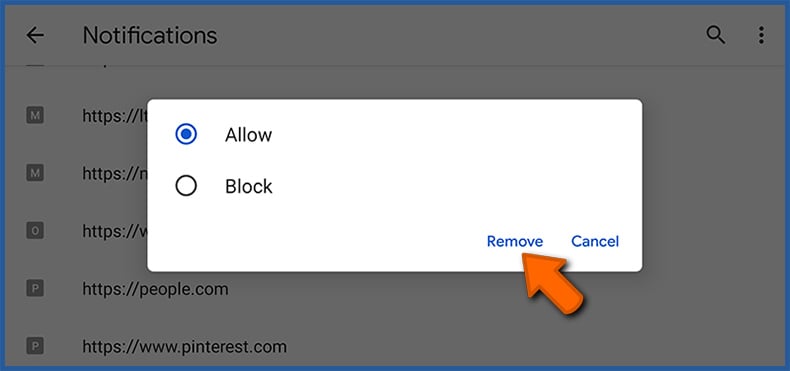
 Remove spam notifications from Mozilla Firefox:
Remove spam notifications from Mozilla Firefox:
Click the Menu button (three bars) on the right upper corner of the screen. Select "Settings" and click on "Privacy & Security" in the toolbar on the left hand side of the screen. Scroll down to the "Permissions" section and click the "Settings" button next to "Notifications".
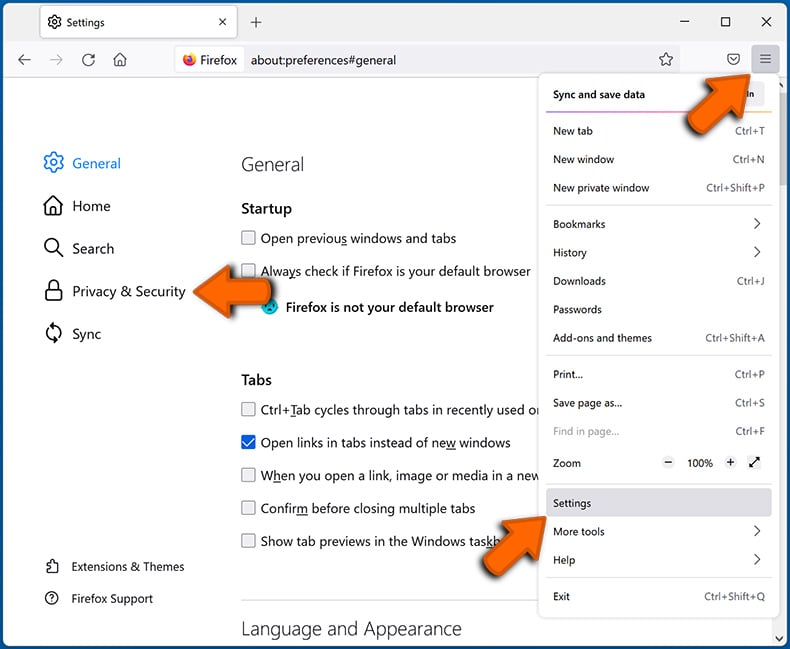
In the opened window, locate all suspicious URLs and block them using the drop-down menu or either remove them by clicking "Remove Website" at the bottom of the window (if you click "Remove Website" and visit the malicious site once more, it will ask to enable notifications again).
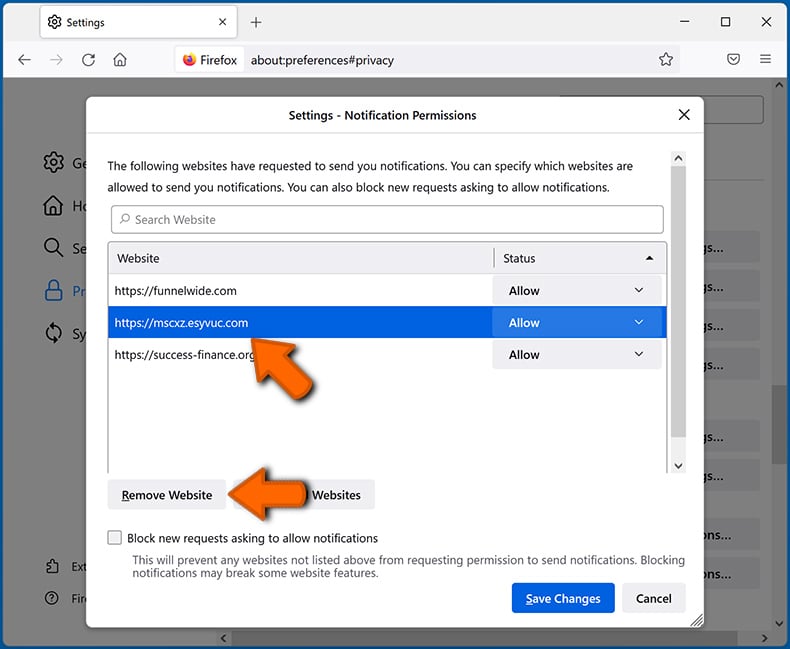
 Remove spam notifications from Microsoft Edge:
Remove spam notifications from Microsoft Edge:
Click the menu button (three dots) on the right upper corner of the Edge window and select "Settings". Click on "Cookies and site permissions" in the toolbar on the left hand side of the screen and select "Notifications".
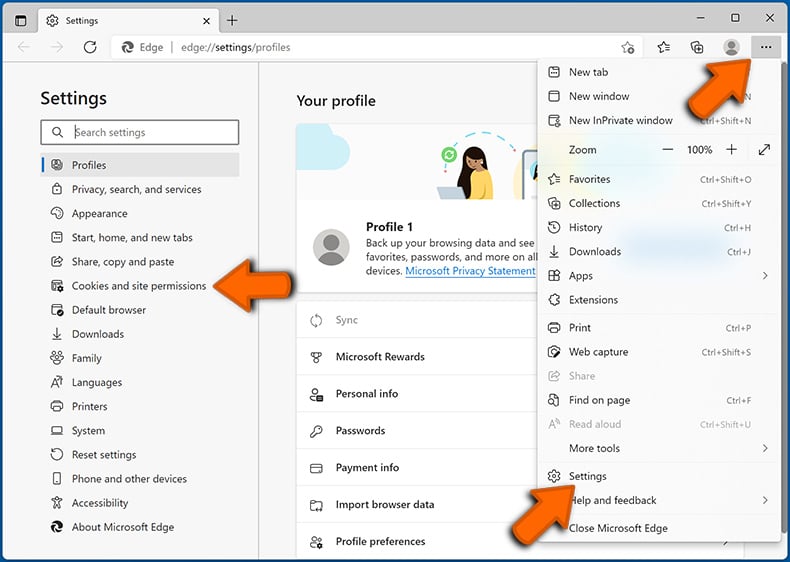
Click three dots on the right hand side of each suspicious URL under "Allow" section and click "Block" or "Remove" (if you click "Remove" and visit the malicious site once more, it will ask to enable notifications again).
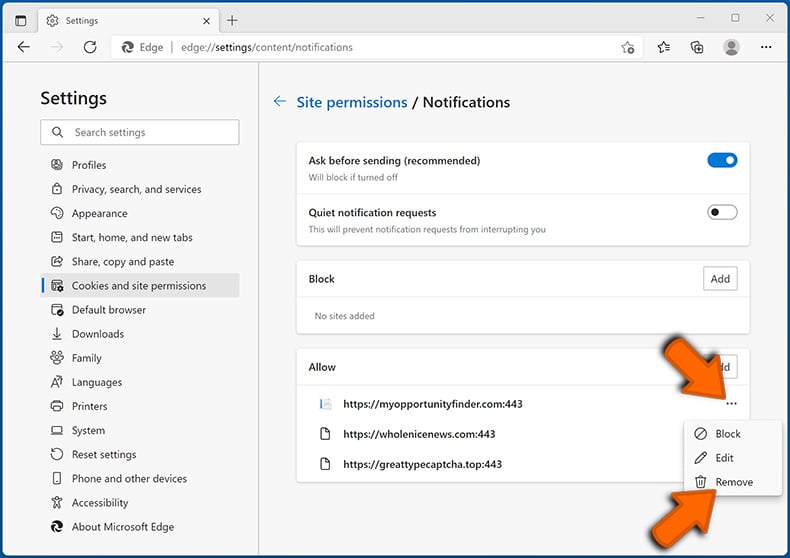
 Remove spam notifications from Safari (macOS):
Remove spam notifications from Safari (macOS):
Click "Safari" button on the left upper corner of the screen and select "Preferences...". Select the "Websites" tab and then select "Notifications" section on the left pane.
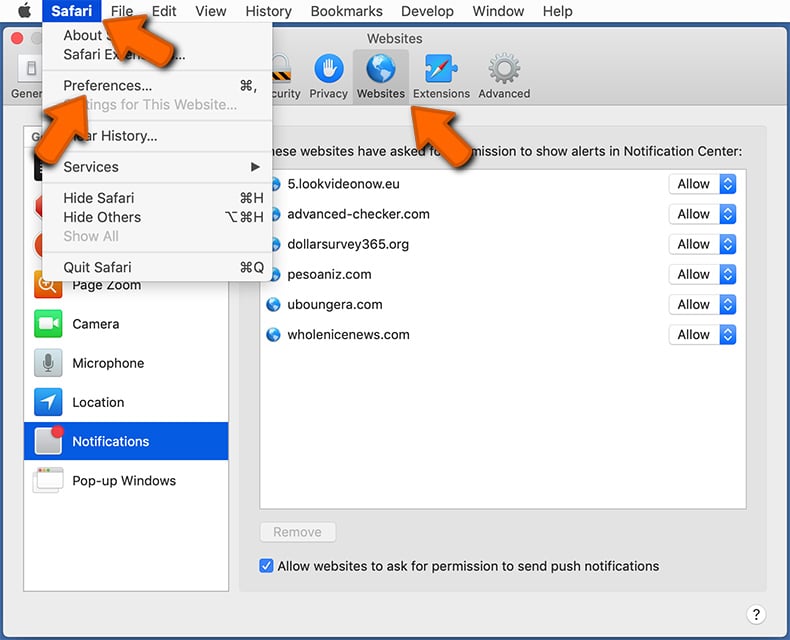
Check for suspicious URLs and apply the "Deny" option using the drop-down menu or either remove them by clicking "Remove" at the bottom of the window (if you click "Remove" and visit the malicious site once more, it will ask to enable notifications again)
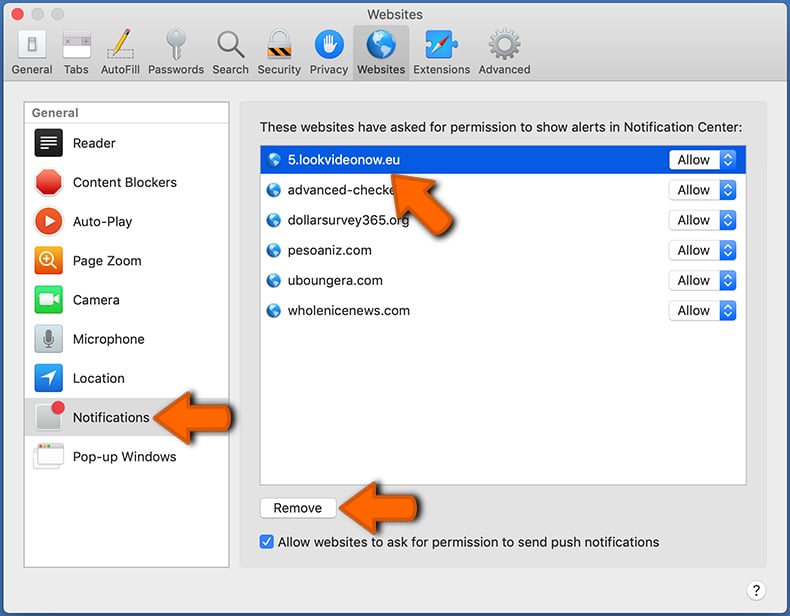
How to avoid browser notification spam?
Internet users should be very skeptical when being asked to allow notifications. While this is a useful feature that allows you to receive timely news from websites you like, deceptive marketers frequently abuse it.
Only allow notifications from websites that you fully trust. For added security - use an anti-malware application with a real-time web browsing monitor to block shady websites that tries to trick you into allowing spam notifications. We recommend using Combo Cleaner Antivirus for Windows.
Share:

Tomas Meskauskas
Expert security researcher, professional malware analyst
I am passionate about computer security and technology. I have an experience of over 10 years working in various companies related to computer technical issue solving and Internet security. I have been working as an author and editor for pcrisk.com since 2010. Follow me on Twitter and LinkedIn to stay informed about the latest online security threats.
PCrisk security portal is brought by a company RCS LT.
Joined forces of security researchers help educate computer users about the latest online security threats. More information about the company RCS LT.
Our malware removal guides are free. However, if you want to support us you can send us a donation.
DonatePCrisk security portal is brought by a company RCS LT.
Joined forces of security researchers help educate computer users about the latest online security threats. More information about the company RCS LT.
Our malware removal guides are free. However, if you want to support us you can send us a donation.
Donate
▼ Show Discussion